Problem Solving With the Pros: An Abundant Garden Stretches Its Means
http://decor-ideas.org 07/24/2015 04:13 Decor Ideas
Donald Pell purchased a Pennsylvania farm in 2008. His plan was to house his office, create a sustainable working farm and provide living space for family members. Soon after that, the economy tanked and the country fell into a recession. Money was tight, and as a result, landscape designers like Pell were frequently sifted out of the mix of necessities.
Pell decided to create an attention-grabbing front garden for the farm. The garden has milliseconds to make a lasting impression on drivers barreling down a country highway at 60 miles per hour, but his thought process, as well as the resulting garden, includes lessons for all of us.
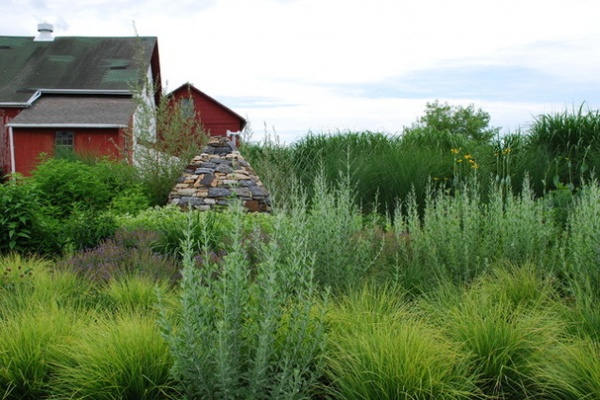
Designer: Donald Pell of Donald Pell Gardens
Size: About 10,000 square feet (929 square meters)
Location: Chester County, Pennsylvania
Primary challenges: To create a sustainable, easily managed garden that attracted attention from passersby and wildlife; to build a garden that could flourish without supplemental irrigation; to incorporate plants that could outcompete weeds blowing in from a neighboring farm; and to screen farm equipment from the street.
Plants shown (from front to back): Moor grass (Molinia cv., USDA zones 5 to 9; find your zone), Russian sage (Perovskia atriplicifolia, zones 4 to 9), ornamental sage (Salvia nemorosa cv., zones 5 to 9), great coneflower (Rudbeckia maxima, zones 4 to 9), mountain mint (Pycnanthemum muticum, zones 4 to 8) and giant maiden grass (Miscanthus giganteus, zones 5 to 9).
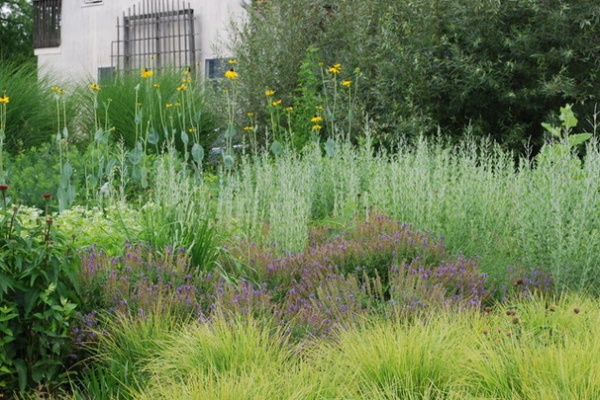
The designer’s process: Pell describes his overriding goals when he approaches any project: to create something beautiful, something that creates excitement, relates to the environment and exhibits design integrity. His desire is to immerse the viewer in the landscape to create an experience, not to just create window dressing. He does this by allowing serendipity to occur, letting plants do what they do best, and by siting plants so that people can rub up against them and experience them in a tactile way.
Pell’s inspiration originates in childhood experiences. As a youth, he played in creeks and fields. He walked through natural landscapes, observing how plants grew, their shapes and textures, and how they related to one another. Today there is a grassy wetland portion of the farm where he goes to think and to decompress. He frequents public gardens and tours for inspiration as well. Pell also studies giants in the landscape design industry, such as Frederick Law Olmsted, the landscape architect behind Central Park, and Wolfgang Oehme, who has been credited with creating the New American garden.
Pell describes his mission in simple terms: to stretch a budget, whether large or small, as far as he can. He also believes in stretching the comfort zone of his clients — this is the basis for creating a memorable space. Finally, he asks a lot of questions so that his final product exceeds expectations.
Plants shown (from front to back): Moor grass, ornamental sage, Russian sage, great coneflower and giant maiden grass.
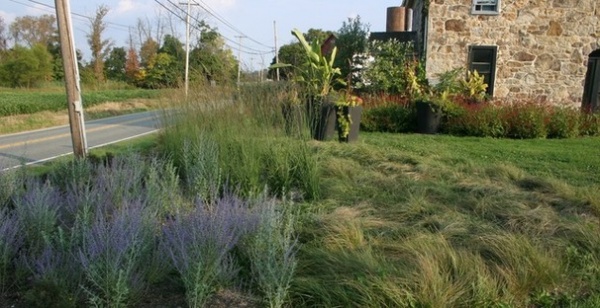
Pell begins his thought process when approaching any new project with a question: What does this place want to become? The resulting process becomes a sort of dialogue between him and the land. Good design, he says, must realize place, whether on a limestone budget or a gravel one. He gives this example: Wind shear snapped a number of trees on the site. He realized that the site had too much pressure on it, and that it wanted to become a sunny meadow.
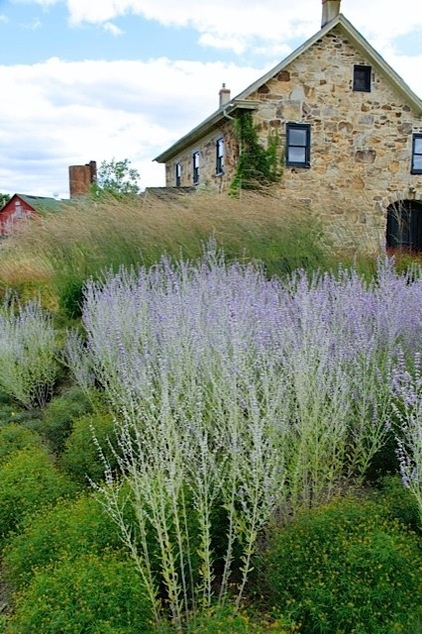
Pell adheres to an aesthetic of “stylized wildness.” He explains that plants typically organize themselves in colonies based on their environmental and cultural needs. This is how they survive. As a designer, Pell believes that mimicking this tendency and adding a feeling of artistic abstraction allow the human brain to process a space in meaningful ways. Repetition and pattern help us understand a space. You will not find many single specimens in Pell’s gardens. He is fascinated by the way different plants interact as a community.
Plant shown: Russian sage in foreground.
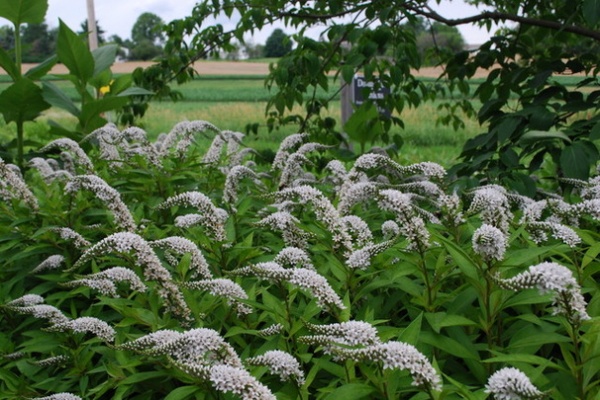
As a plantsman, Pell does not shy away from thuggish or aggressive plants, preferring to call them “successful.” These are generally the most effective plants for the landscape, he says, and a way to stretch a budget as far as it will go. Bullish plants keep others in check. The problem comes when people site an aggressive plant beside a polite, nonspreading one. The bullish plant will always win.
Pell advocates taking time to study and understand your plants and their needs. He thinks of plants as pieces of technology that we need to understand on a physiological level. His advice is to not go to garden centers to learn about plants, as many retail outlets focus on plants that have been bred to be small, to produce a profusion of blooms and that are trendy, instead of being long-lived in the landscape. Instead, he says, go to public gardens, where they need to generally meet and even stretch their budgets. There you can see what works long-term.
Finally, Pell advocates being honest with yourself. Analyze your likes and dislikes and go with those rather than what is trendy at the garden center. And understand your conditions.
Plant shown: Gooseneck loosestrife (Lysimachia clethroides, zones 3 to 8).
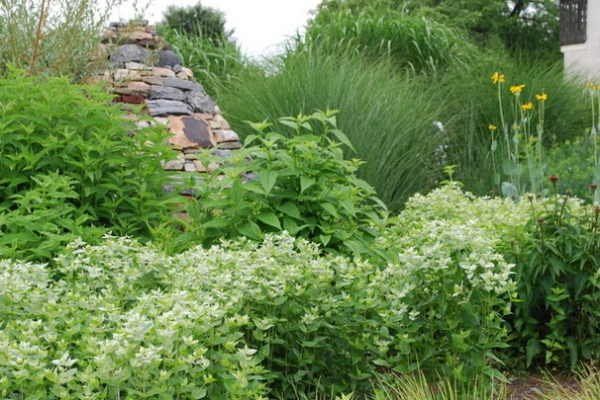
The Designer’s Solutions for a Sustainable, Attractive Landscape That Stretches a Budget
Create a destination with a focal point. Every great garden provides focal points to help the visitor understand the space. In Pell’s garden, a cairn (an artfully constructed mound of stones) is the focal point of choice. Historically, cairns are destination markers for shipping. In this case the cairn anchors the space. Pell’s desire for his farm is that it become a destination for design-related horticulture, hence the appropriateness of the cairn.
Plants shown (from front to back): Mountain mint, coneflower (Echinacea sp.), ornamental sage, great coneflower, ‘Gracillimus’ maiden grass (Miscanthus sinensis ‘Gracillimus’, zones 5 to 9) and giant maiden grass.
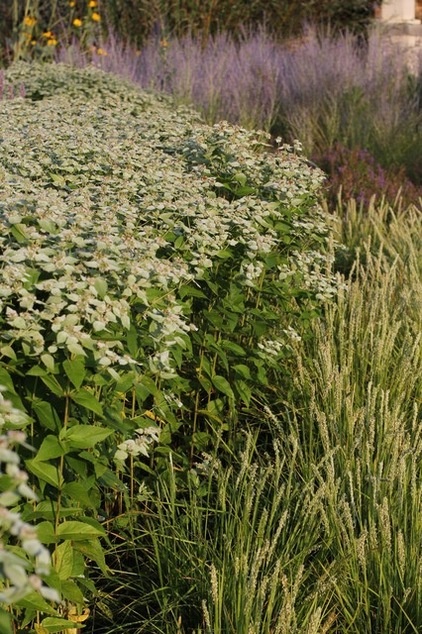
Pair plants based on growth characteristics, texture and form. Pell believes that designing with stoloniferous plants (those that spread by runners or rhizomes) makes good financial sense. It is imperative, he says, to use plants based on their propensity to spread. That way they can hold their own in the landscape, and can be planted 5 feet apart to stretch the budget if necessary. Pell uses no mulch and little supplemental irrigation. His plant choices, once established, must stand on their own, minimizing ongoing maintenance costs.
Creating maximum interest also involves employing juxtaposition, or contrast. Pell uses the phrase “democratizing a space” to describe his thought process behind his plant choices. Each plant selection brings something interesting and vital to the overall composition.
In Pell’s garden, mounding plants, such as this native mountain mint, are juxtaposed with vertical perennials, such as Russian sage and various grasses, to highlight texture and form. All of these plants are inexpensive and easily sourced. Additionally, mountain mint and Russian sage are magnets for bees and butterflies.
Discover more ways to attract butterflies to your garden
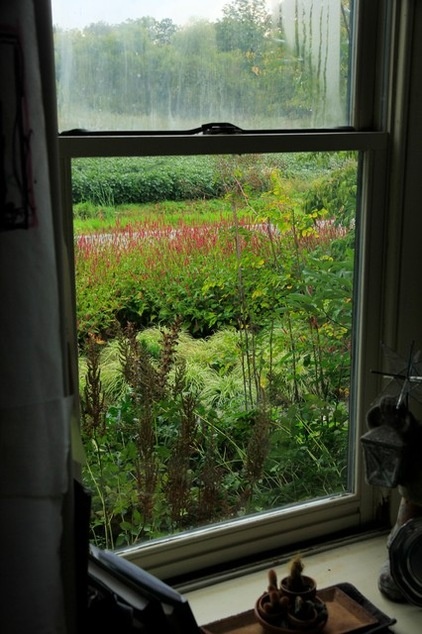
Consider planting design from all vantage points. A well-designed garden looks good from any angle. Pell’s garden is designed for maximum curb appeal, but attention was also given to its appearance from alternate viewing points.
Taller plants mask unsightly farm equipment, while seasonal flashes of color, here provided by mountain fleece (Persicaria cv., zones 4 to 7), pull attention from less-than-attractive utility lines.
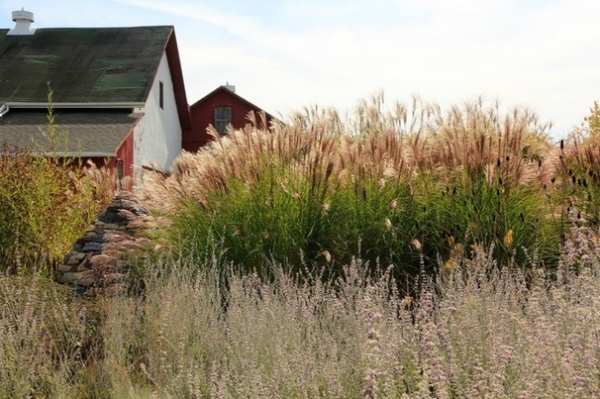
Provide year-round seasonal interest. A great garden looks good year-round by transforming itself seasonally. Ornamental grasses, such as this ‘Gracillimus’ maiden grass, provide four-season interest and are an affordable alternative to many other seasonal ornamentals.
Pell also advocates the use of plants, particularly grasses, to retain slopes as a budget-wise alternative to walls, which he says are frequently overbearing anyway.
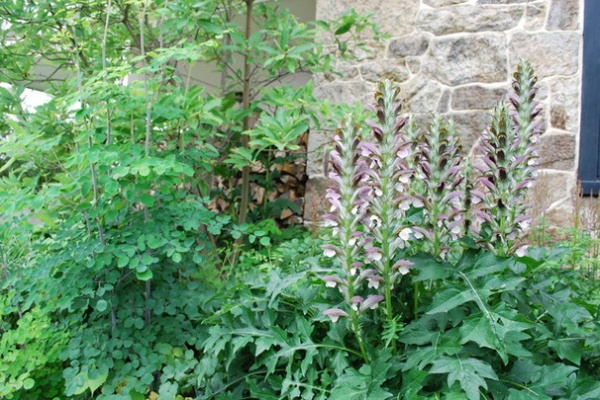
Use scrim to add depth and interest while creating the illusion of more space. The garden nearest the house reads as a case study in texture and form. Tall, loose plants, such as giant meadow-rue (Thalictrum rochebrunianum, zones 4 to 8), shown on the left, and Hungarian bear’s breech (Acanthus balcanicus, syn. A. hungaricus, zones 6 to 8), on the right, are positioned in such a way that the viewer peers through them to see the remainder of the bed. This successful use of scrim makes a narrow bed appear larger because of the added dimensionality. This immersion in a landscape is a trademark of Pell’s, and one that this garden wears well.
More:
See more guides to landscape design
Why Aggressive Plants Might Actually Be Your Friends
Related Articles Recommended












